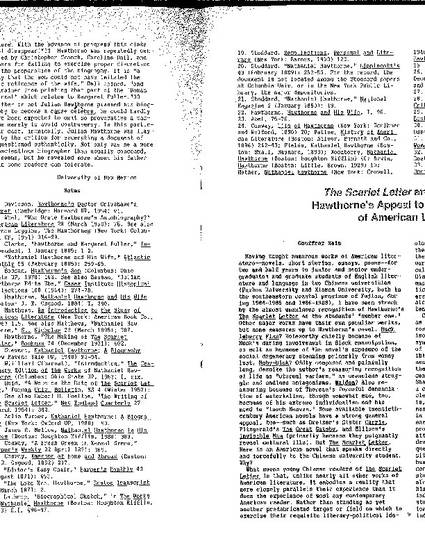
Having taught numerous works of American literature -- novels, short stories, essays, poems -- for two and a half years to junior and senior undergraduates and graduate students of English literature and language in two Chinese universities (Fuzhou University and Xiamen University, both in the southeastern coastal province of Fujian, during 1984-1985 and 1986-1988), I have been struck by the almost unanimous recognition of Hawthorne's The Scarlet Letter as the students' "number one." Other major works have their own peculiar merits, but none measures up to Hawthorne's novel. Huckleberry Finn? Noteworthy chiefly because of Huck's daring involvement in Black emancipation, as well as because of the novel's exposure of the social degeneracy stemming primarily from money lust. Moby-Dick? Oddly composed and painfully long, despite the author's reassuring recognition of life as "eternal warfare," as ceaseless struggle and endless antagonisms. Walden? Also reassuring because of Thoreau's forceful denunciation of materialism, though somewhat mad, too, because of his extreme individualism and his need to "touch Heaven." Some available twentieth-century American novels have a strong general appeal, too -- such as Dreiser's Sister Carrie, Fitzgerald's The Great Gatsby, and Ellison's Invisible Man (primarily because they poignantly reveal cultural ills). But The Scarlet Letter. Here is an American novel that speaks directly and forcefully to the Chinese university student. Why?
Available at: http://works.bepress.com/geoffrey_kain/23/
